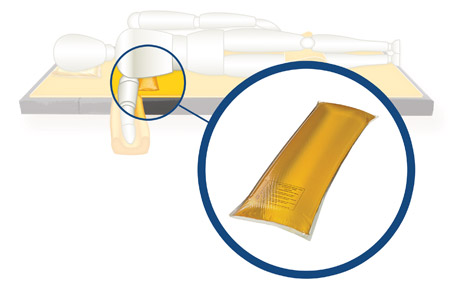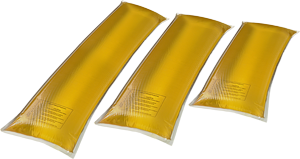Essential goods are part of any great care or service. The operating room has countless examples of such materials. As perioperative professionals we know what is needed to provide the safest patient care.
Positioning patients safely and effectively is paramount to the success of all procedures. We often require more dedicated time and effort to position our patients, than it takes to complete the entire surgical procedure. The lateral position involves multiple steps and items to achieve safety and success. A critical device for this position is the axillary roll. This device is a hot commodity in many operating rooms; which may at times lead to a short supply because of hoarding by one service team or another. The savvy OR team member looks ahead for the needs of the patient. However there are unplanned cases, and emergent needs that arise throughout the day. Despite these spontaneous cases, the OR nurse must never sacrifice safety at the cost of anatomical exposure and position.
When selecting the lateral positioning device (axillary roll), some factors to consider are: 
- Choosing a device designed for use as an axillary support.
- Items that should be excluded are rolled towels, blankets, and IV bags.
- Place the axillary roll distal to the patient’s axilla, anatomical landmarks of reference include patient’s 7th-9th rib. (AORN Guidelines Competency Verification Tool: Positioning, lateral-RN or Non-RN)
- Placement of the axillary rolls is completed to prevent injury to neurovascular structures such as axillary nerve and artery; and to take pressure off of humeral head while allowing for greater respiratory expansion.
- One way to verify pressure reduction and correct placement of an axillary device is the assessment of the radial pulses of the patient’s dependent arm.
One item designed to meet all the aforementioned needs is the Action® axillary roll. A device designed and intended to provide axillary support and pressure redistribution across the sensitive areas of the lateral- thoracic region and nerves.
With three various sizes to choose from the proper patient anatomical coverage and rib support can be achieved with one device. Furthermore, the Action® axillary roll features the Akton® polymer covering; which does not need to be covered with an additional layer such as a cotton sheet. The Akton® polymer prevents the potential friction or shearing on patient skin.
Patient positioning is a team effort. Teams are aided by the correct support device and tools at their ready. Continued assessment of patient positioning devices and condition is critical to attaining consistent safe patient positioning in the perioperative setting.
Amos Schonrock, MAN, RN, PHN, CSSM, CMAMB, CNOR- Peripoerative Practice and Safety Specialist
B9009-001



